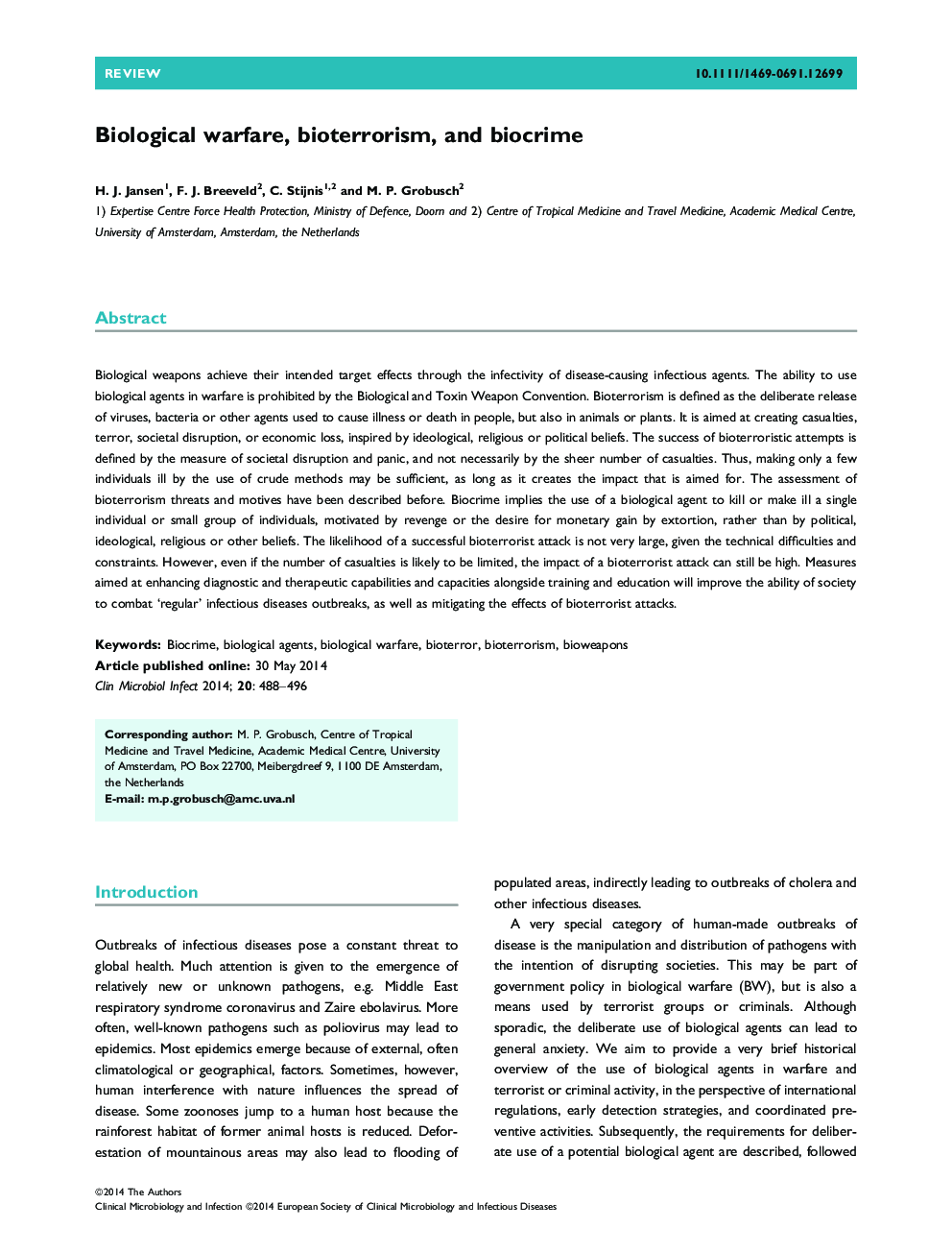| کد مقاله | کد نشریه | سال انتشار | مقاله انگلیسی | نسخه تمام متن |
|---|---|---|---|---|
| 6130542 | 1222176 | 2014 | 9 صفحه PDF | دانلود رایگان |
عنوان انگلیسی مقاله ISI
Biological warfare, bioterrorism, and biocrime
ترجمه فارسی عنوان
جنگ های زیستی، بیوتروریسم و مواد مخدر
دانلود مقاله + سفارش ترجمه
دانلود مقاله ISI انگلیسی
رایگان برای ایرانیان
کلمات کلیدی
موضوعات مرتبط
علوم زیستی و بیوفناوری
ایمنی شناسی و میکروب شناسی
میکروب شناسی
چکیده انگلیسی
Biological weapons achieve their intended target effects through the infectivity of disease-causing infectious agents. The ability to use biological agents in warfare is prohibited by the Biological and Toxin Weapon Convention. Bioterrorism is defined as the deliberate release of viruses, bacteria or other agents used to cause illness or death in people, but also in animals or plants. It is aimed at creating casualties, terror, societal disruption, or economic loss, inspired by ideological, religious or political beliefs. The success of bioterroristic attempts is defined by the measure of societal disruption and panic, and not necessarily by the sheer number of casualties. Thus, making only a few individuals ill by the use of crude methods may be sufficient, as long as it creates the impact that is aimed for. The assessment of bioterrorism threats and motives have been described before. Biocrime implies the use of a biological agent to kill or make ill a single individual or small group of individuals, motivated by revenge or the desire for monetary gain by extortion, rather than by political, ideological, religious or other beliefs. The likelihood of a successful bioterrorist attack is not very large, given the technical difficulties and constraints. However, even if the number of casualties is likely to be limited, the impact of a bioterrorist attack can still be high. Measures aimed at enhancing diagnostic and therapeutic capabilities and capacities alongside training and education will improve the ability of society to combat 'regular' infectious diseases outbreaks, as well as mitigating the effects of bioterrorist attacks.
ناشر
Database: Elsevier - ScienceDirect (ساینس دایرکت)
Journal: Clinical Microbiology and Infection - Volume 20, Issue 6, June 2014, Pages 488-496
Journal: Clinical Microbiology and Infection - Volume 20, Issue 6, June 2014, Pages 488-496
نویسندگان
H.J. Jansen, F.J. Breeveld, C. Stijnis, M.P. Grobusch,
